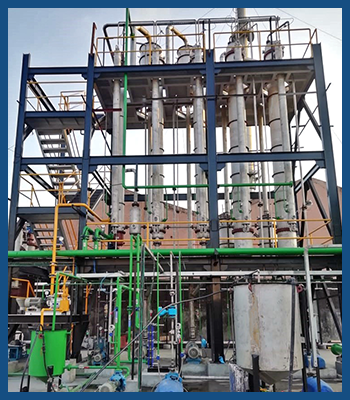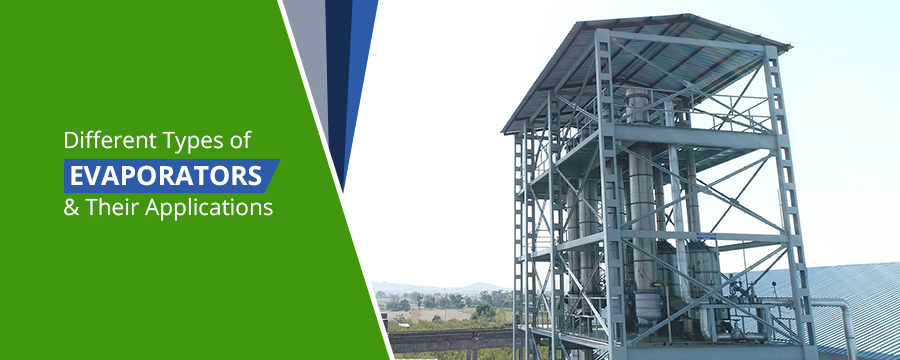
Agitated Thin Film Dryer (ATFD) Pilot Plant
06/03/2019
How to Boost Tea and Coffee Powder Production Using Innovative Equipment
25/05/2019At present, evaporators find applications in a broad spectrum of processes in various industrial sectors including, pharmaceuticals, food & beverages, pulp & paper, chemicals. Over the years, process engineers have developed different types of evaporators suitable for a plethora of applications. Choosing the right evaporator mainly relies on the characteristics of the products and the desired results.
Any variant of an evaporator is made of components including, heat exchangers, manifolds, condenser, controls, and pumps. A well-designed evaporator should at the most.
- Be well-designed to transfer heat at a rapid pace using minimum surface area
- Be able to segregate vapour from the liquid concentrate effectively
- Be ideal for products that are being processed
- Be able to produce the right product
- Reduce fouling of heat transfer surfaces
- Be built with materials to minimize corrosion
Different Types of Evaporators
We manufacture a diverse range of evaporators at our state-of-the-art manufacturing facility such as:
- Forced circulation
- Rising film
- Agitated film
- Multiple effect evaporation
- Wiped film
- Falling film
Forced-Circulation Evaporators
During the designing stage of a tubular evaporator, it is essential to assess the value of the mechanical recirculation. At first, the introduction of a pump and a few added controls may increase the installation, maintenance, and operating costs.
However, it is crucial to understand that if a part of the concentrate is recirculated to the feed stream, it will increase heat transfer which is sufficient to reduce the evaporator’s size which eventually results in reduced costs.
Moreover, the increase in the liquid velocity in the tubes will also play an essential role in getting rid of fouling, thus, reducing downtime.
Applications:
Applications in which forced circulation is used include, urea, sodium sulfate, sodium chloride, magnesium chloride, caustic potash, citric acid, and ammonium sulfate.

Forced Cerculation Evaporators

Forced Cerculation Evaporators
Falling-Film Evaporator
The long-tube falling-film evaporator is a variant of the long-tube rising film evaporator. Here, the equipment is kept in an inverted position so that the tubular heat exchanger is at the top of the liquid separator area.
The feed enters the evaporator from the top in which the distributors distribute the feed evenly in each tube. Feed distribution is very crucial, and there are several suitable designs for distributors, but in most cases, they are developed around some perforated plate that is placed on top of the tube sheet.
Thanks to the gravitational pull, the film is pulled downwards which is an added advantage for the falling-film evaporator. This type of evaporator is widely used in applications in which the temperature driving force of the heating medium and liquid is small.
Applications:
The concentration of dairy products, sugar solutions, phosphoric acid, and black liquor.
Rising/Falling-Film Evaporator
The rising-falling film evaporator is the combination of a rising film evaporator and the falling-film evaporator so that the benefits of both evaporators are incorporated into one. In applications where a very high ratio of evaporation to feed is necessary, the tube bundle can be segmented into two parts; the first that operates as a rising-film and the second part as a falling-film.
Applications:
Handling liquids or foamy liquids where evaporation loads are high.

Agitated Thin-Film Evaporators
Agitated Thin-Film Evaporators
Agitated thin-film evaporators are considered ideal for materials that are not easy to handle. Although tubular evaporators work efficiently with a range of materials, they have met little success in handling heat-sensitive, fouling, viscous, and high-boiling liquids. Some of the common issues with tubular evaporators include degradation caused by high residence time, heat transfer surfaces fouling, plugging of the tubes, low transmission of heat, and high-pressure drops.
Agitated films cater to the problems mentioned above in materials that are not easy to handle. Simply put, this technique rapidly segregates the volatile and less-volatile substances by using indirect heat transfer and mechanical agitation of product films.
Applications:
Widely used to purify organic chemicals including natural oils, fatty acids, herbicides, insecticides
Food concentration and pharmaceuticals including, vegetable and fruit purees, plant and vegetable extracts, biological solutions, etc.
The minimisation of harmful waste disposal
Cent Pro is at the forefront of manufacturing a range of high-quality and ultra-modern evaporators including, falling film evaporators, forced circulation evaporator, rising/falling film evaporator, agitated-film evaporator, multiple effect evaporator, and wiped film evaporator.
Our objective is to use our process engineering expertise and innovative ideas to develop state-of-the-art evaporators ideal for our client’s requirements. This blog will focus on the different types of evaporators and their application areas.
At present, evaporators find applications in a broad spectrum of processes in various industrial sectors including, pharmaceuticals, food & beverages




